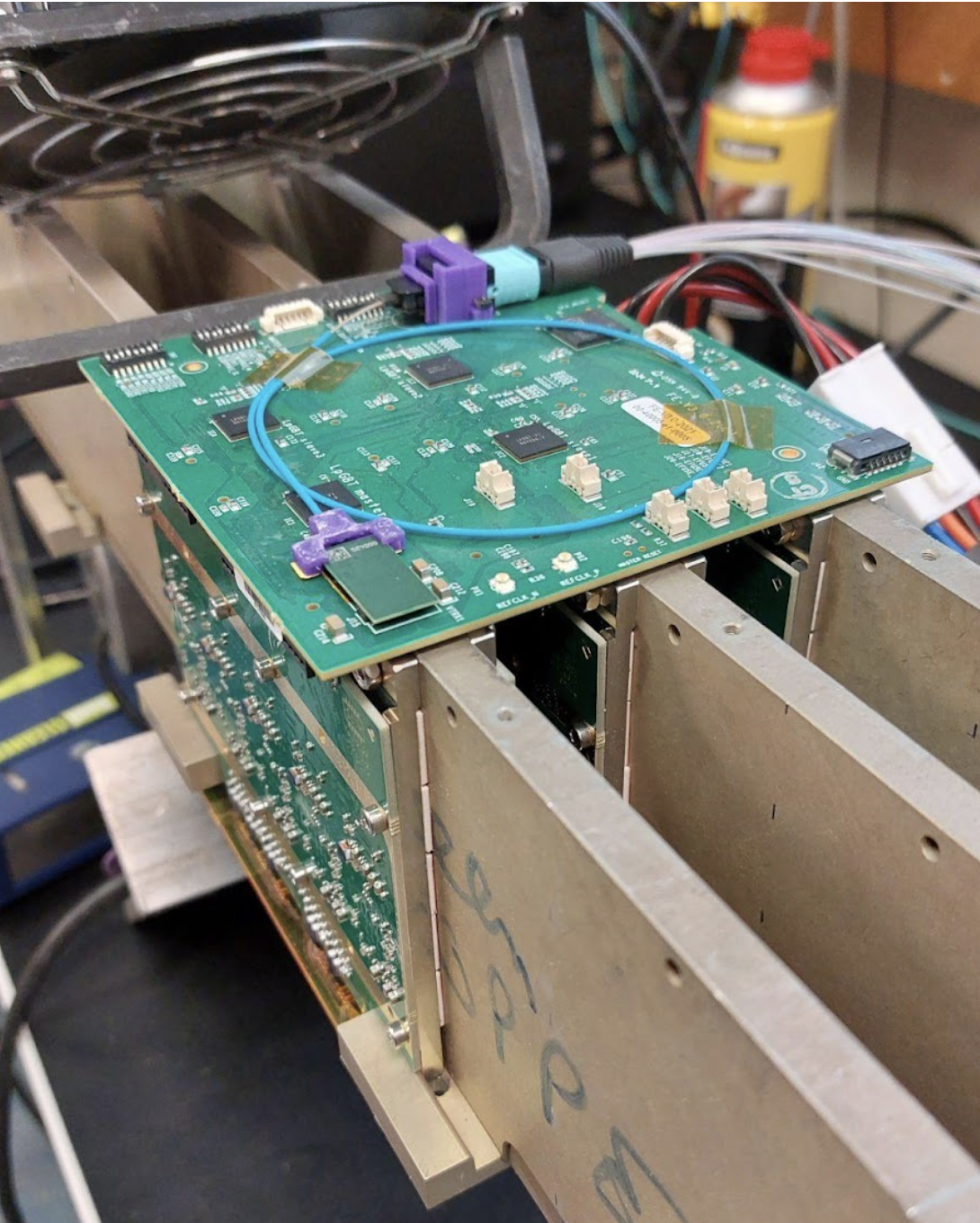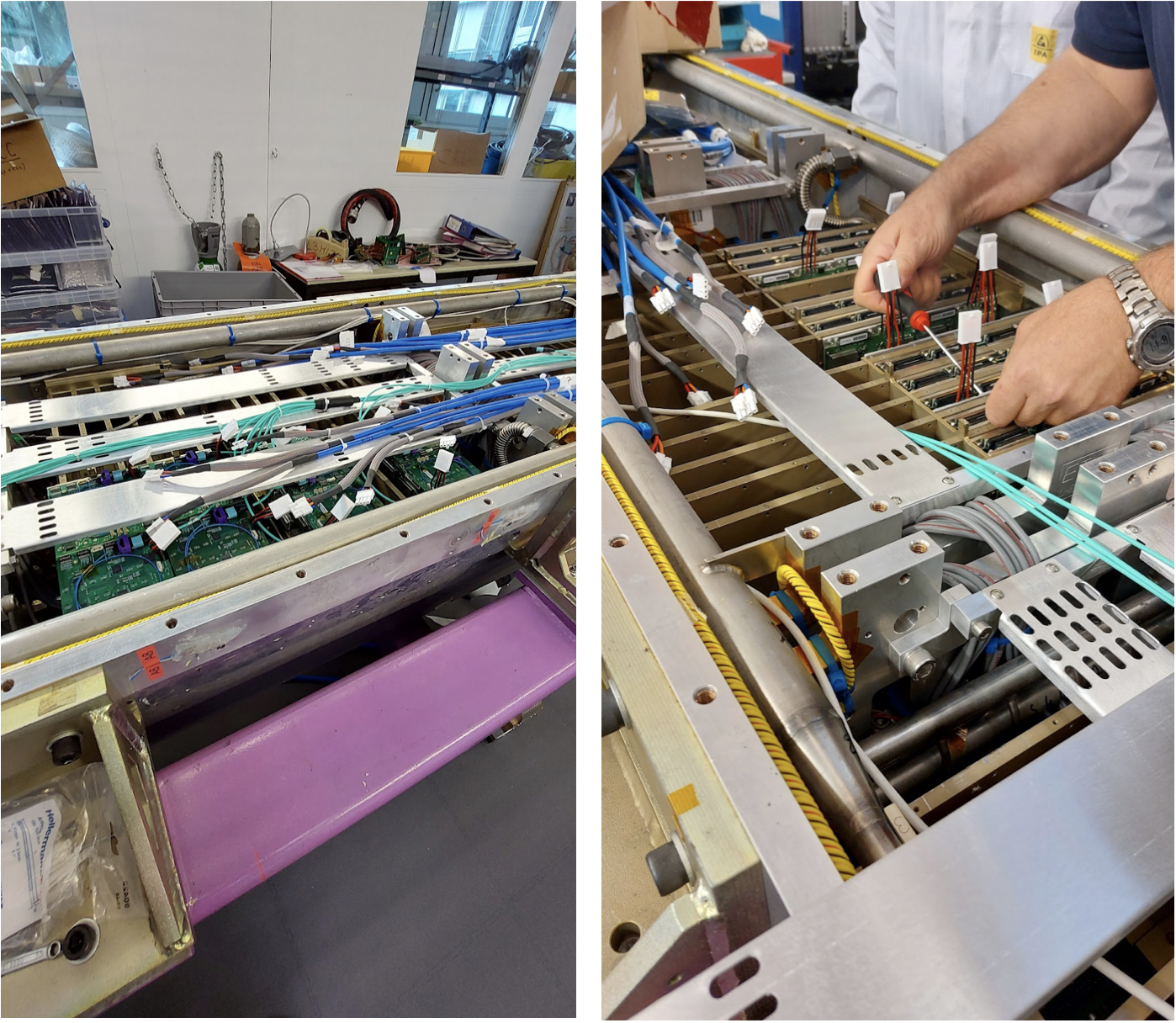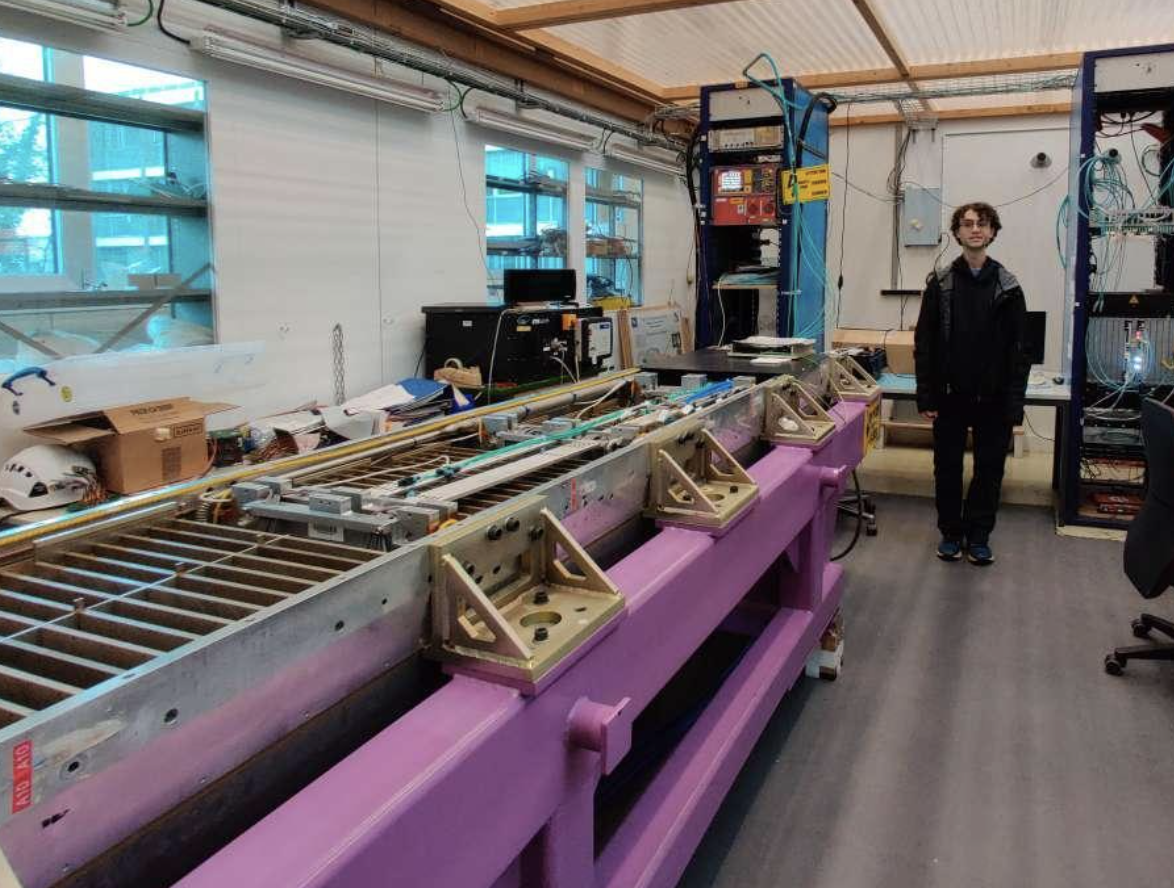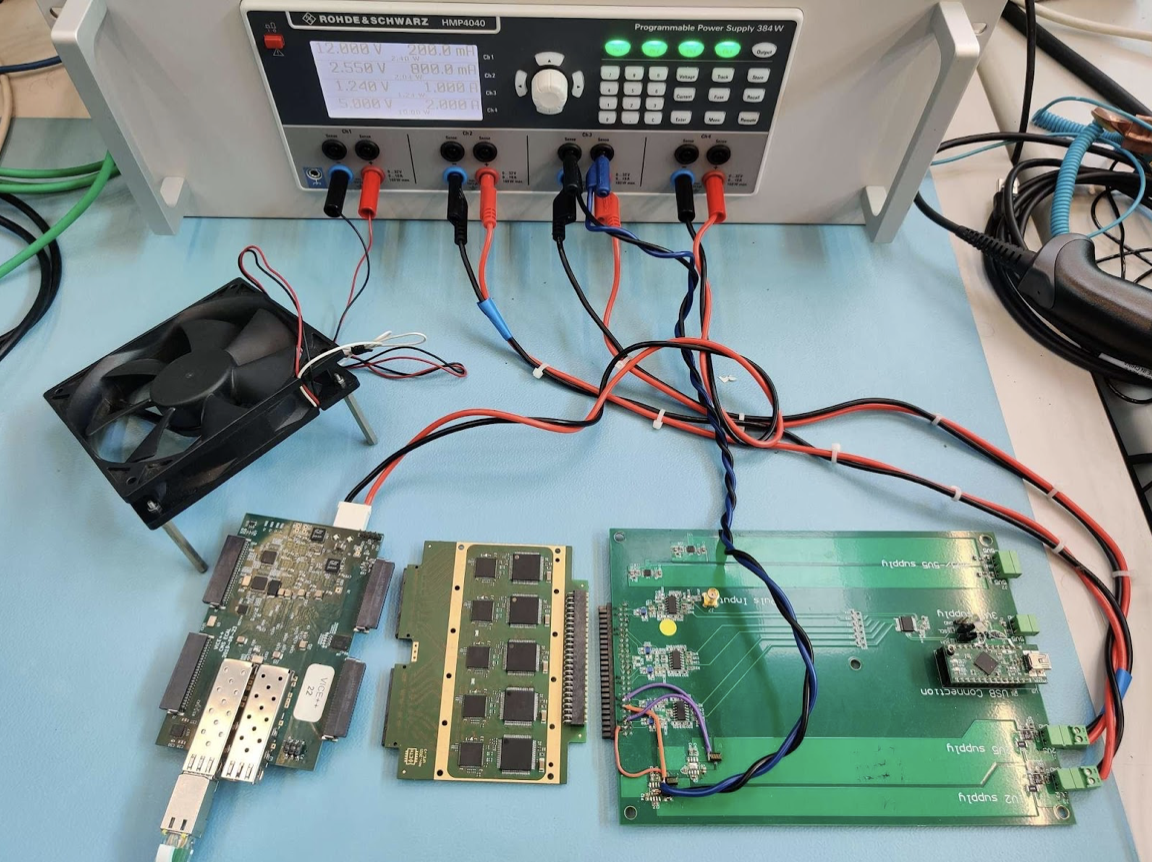Upgrading the CMS Electromagnetic Calorimeter Readout Electronics for Phase-2

The CMS electromagnetic calorimeter (ECAL) was designed to provide excellent energy resolution for electrons and photons in the challenging, high-radiation environment of the Large Hadron Collider [1]. In particular, the excellent design energy resolution of the CMS ECAL was aimed at the discovery of the Higgs boson in the “golden” two photon decay channel. To this end, the CMS ECAL was built as a hermetic, homogenous, fine-grained detector made of scintillating lead tungstate crystals and is housed inside the 3.8 T CMS solenoid. When photons or electrons impinge upon the ECAL crystals, they produce electromagnetic showers in proportion to the initial photon or electron’s energy. Photodetectors, designed to work within the high magnetic field, are glued to the back end of each crystal to detect the scintillation light and convert it into electrical signals. The electrical signals are then processed with dedicated readout electronics, which amplify, shape, and digitize the data, while also processing information for the hardware-level (L1) trigger.
The ECAL crystals are organized into a central barrel region closed by two endcaps in the forward regions. The cylindrical ECAL barrel consists of 61200 crystals total and is divided into 36 supermodules, each weighing about three tons and containing 1700 crystals. Each ECAL endcap is made up of 7324 crystals and divided into two Dee-like structures.
The High Luminosity LHC (HL-LHC) will provide unprecedented instantaneous and integrated luminosity with difficult radiation conditions and a high number of overlapping interactions (pileup). Due to irrecoverable, radiation-induced damage to the crystals, the ECAL endcaps will be replaced by the new High Granularity Calorimeter for HL-LHC. However, the crystals and photodetectors (avalanche photodiodes, or APDs) of the ECAL barrel will continue to perform well throughout the HL-LHC. The overall mechanical structure of the ECAL barrel will also remain the same.
The Phase-2 upgrade will entail a refurbishment of the readout electronics of the ECAL barrel to accommodate the higher rate and latency requirements of the HL-LHC [2]. The front-end will use new, faster analog electronics and the sampling rate will increase from 40 to 160 MHz, with 12-bit resolution, to obtain better time resolution. The improved time resolution will help with pile-up mitigation and rejection of anomalous signals which arise from particles interacting directly with the silicon in the APDs. In addition, the processing of the trigger logic will be moved via high-speed optical links to the off-detector electronics, where more sophisticated trigger algorithms can be applied. The cost of this improvement is the increase in data rate, for which a lossless data compression mechanism was devised. Finally, the ECAL operating temperature will be lowered from the current 18°C to 9°C in order to mitigate the increase in radiation-induced dark current in the APDs, which causes an increase in electronics noise.
Figure 1 depicts a schematic of the new on-detector electronics. The upgraded very-front-end (VFE) is made of an analog ASIC called CATIA, which implements two transimpedance amplifiers with 35 MHz bandwidth, and a digital ASIC called LiTE-DTU, which provides 12-bit ADC sampling at 160 MHz and data transmission with gain selection and compression. Each VFE has five channels (each one reading the data from one crystal), and each channel consists of a CATIA and a LiTE-DTU ASIC. Five VFEs are connected to a single front-end (FE) card that collects data from the VFEs and transmits to the off-detector electronics using the lpGBT optical transmission system. The FE will also include a new low voltage regulator board (LVR), due to the different supply voltage required for the new ASICs. Off-detector, the Barrel Calorimeter Processor (BCP) card will use high-end FPGAs to form the L1 trigger decision and read out the detector.

Figure 1: The design of the new ECAL readout electronics for Phase-2.
A major milestone for the ECAL barrel upgrade was a full vertical integration test that took place in Fall 2022. In Nov 2022, these system tests culminated in a successful test beam campaign, in which the full Phase-2 readout chain was tested from crystal to backend BCP board. For this test beam campaign, the spare ECAL supermodule had 8 readout towers (200 channels) equipped with the new readout electronics (Figures 2, 3) and was transported to the CERN H4 beamline to be tested with high energy beams (Figure 4). Figure 5 shows an example of the pulse shapes read out at the test beam using the full readout chain. The data collected is being analyzed to understand the linearity and timing resolution of the new electronics.

Figure 2: ECAL readout tower equipped with new front-end board.

Figure 3: (left) Spare ECAL barrel supermodule which is being used for full vertical integration tests; (right) Close-up of the new on-detector electronics being integrated into the spare ECAL barrel supermodule.

Figure 4: Spare ECAL barrel supermodule equipped with new readout electronics, at the CERN H4 beam line.

Figure 5: ECAL signals observed during the Nov 2022 test beam campaign, during which the full Phase-2 readout chain was tested from crystals to backend readout board.
The full scale integration tests entailed a large team of ECAL members, including Daniel Abadjiev, an undergraduate student from Northeastern University (Boston, USA). Daniel spent 6 months (June - December 2022) at CERN working full-time on the ECAL barrel electronics upgrade (Figure 6). During his time at CERN, Daniel worked on developing an automated procedure to test the basic functionality of the new VFE cards and also developed specialized programs to test card longevity (Figure 7). Daniel participated in the Nov 2022 test beam campaign, aiding with data and detector monitoring, and also taking night shifts to collect data.

Figure 6: Undergraduate student Daniel Abadjiev in B892 with the spare ECAL supermodule.

Figure 7: Test stand for the new ECAL very-front-end (VFE) readout electronics. The new VFE board can be seen in the middle, with the ASICs for the CATIA preamplifier and LiTE-DTU digitizer.
With the new electronics validated and moving from the pre-production to production era, the CMS ECAL community is preparing for the removal, refurbishment, reinstallation, and recommissioning of the 36 ECAL barrel supermodules. With the Phase-2 Upgrade, the CMS ECAL detector will continue to provide good energy resolution, with the addition of improved timing resolution, throughout the HL-LHC period.
References
[1] CMS Collaboration, “Performance and Operation of the CMS Electromagnetic Calorimeter,” JINST 5, T03010 (2010).
[2] CMS Collaboration, “The Phase-2 Upgrade of the CMS Barrel Calorimeters,” CERN-LHCC-2017-011 ; CMS-TDR-015.
